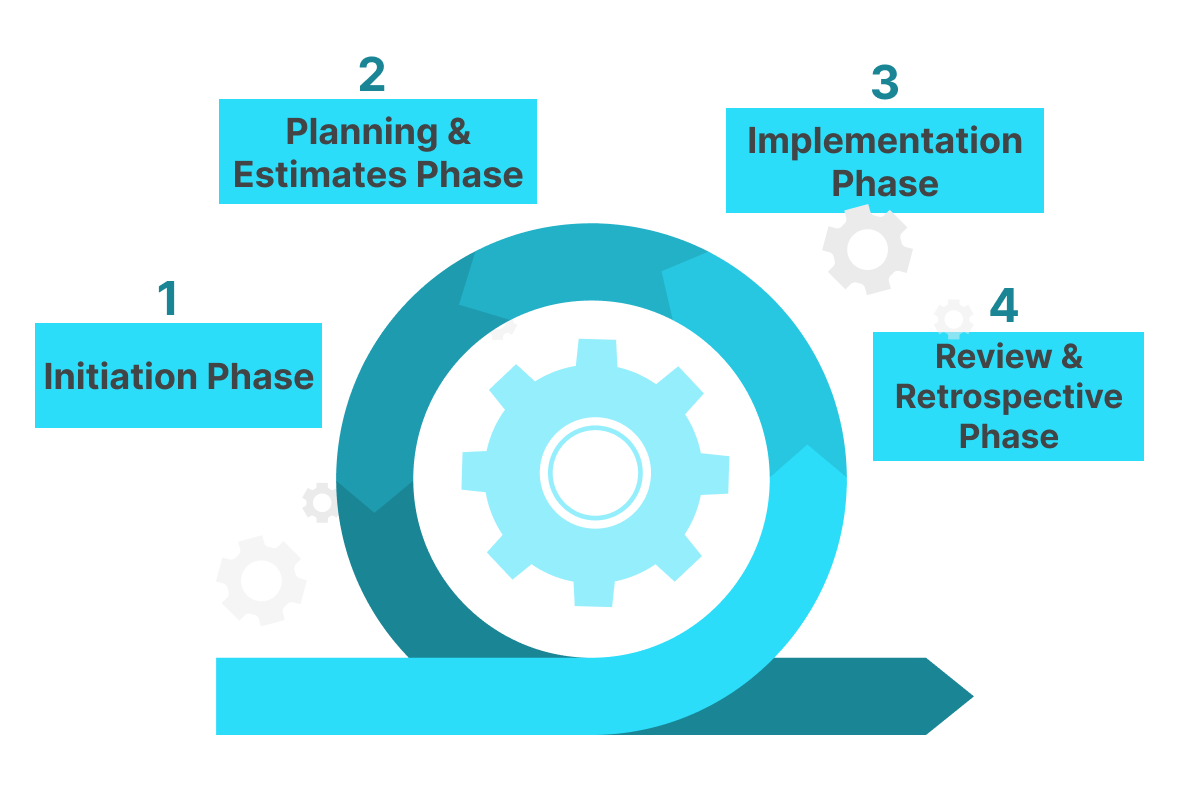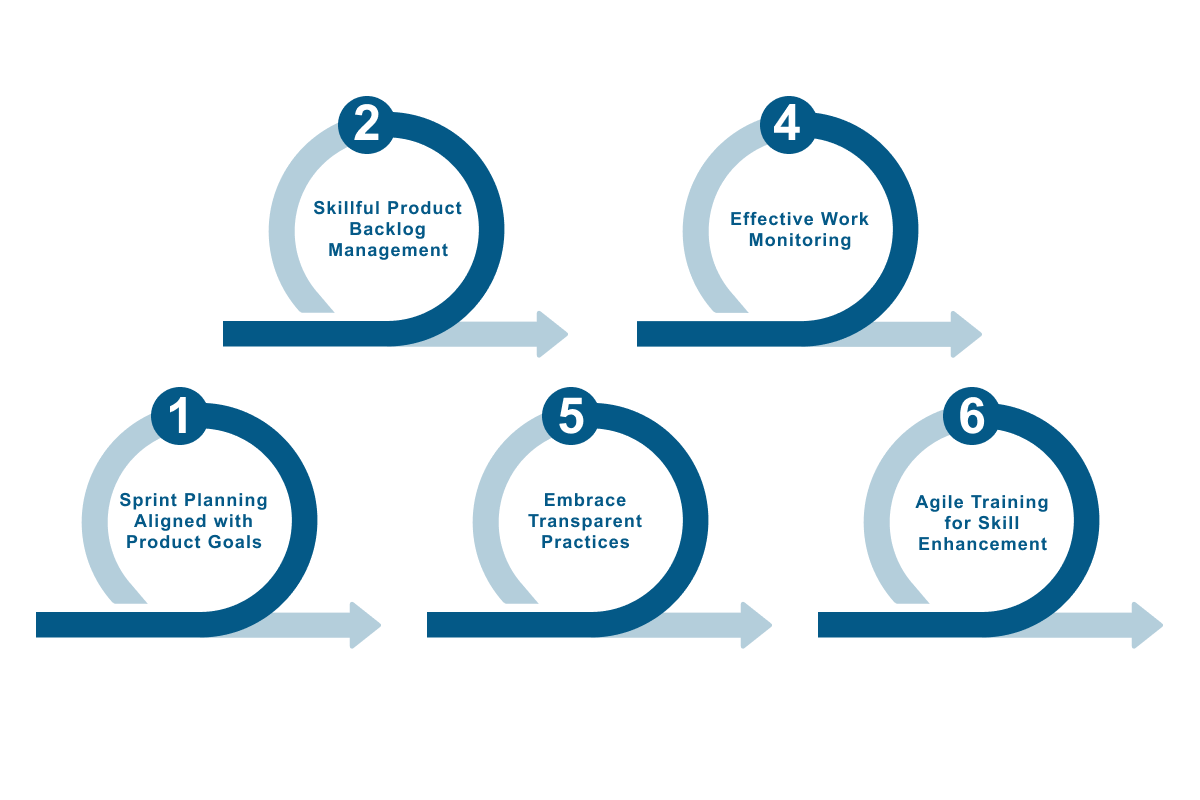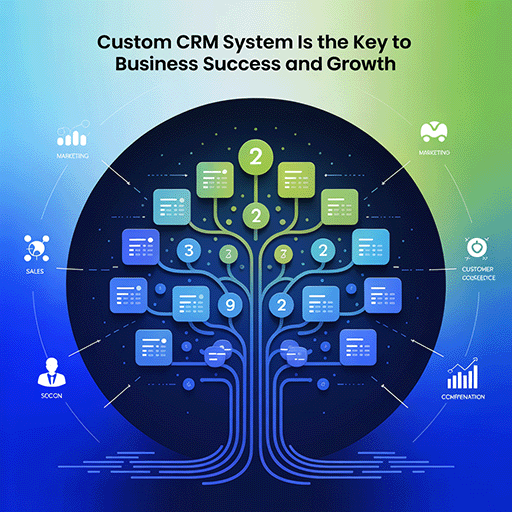Siemens, Vodafone, and Porsche: these industry giants have embraced agile working methods and rely on the skills of small, nimble teams. The Scrum methodology has become firmly established in their operations, but the benefits of it go beyond these corporate giants.
In agile project management, the Scrum method has become firmly established. It owes this strength to its ability to succeed in areas where traditional approaches falter—accomplishing complicated tasks with finesse and efficiency, even when resources are limited. Scrum’s foundations are based on a simple but powerful principle.
How can small and medium-sized businesses make this method work for them? In this article, we delve into the intricate workings of the agile approach.
What is Scrum?
If you work on digital projects, you’ve probably already come across the Scrum method. This is a popular way of managing projects that many industries use. Notably, 91% of companies say adopting agile methods is their big goal. At the same time, when they say they use an agile methodology 87% of the time, they mean Scrum. That means you need to learn the method if you want to do well with digital projects these days.
At its core, the Scrum model enables teams to self-organize and find the best ways to achieve their goals. This way of working helps get good things done quickly without wasting time. Scrum is used in many industries, such as software development, manufacturing, and marketing. People like it because it’s easy to adapt, and it’s all about working together and giving power to the team.
Think of this method as a way to do things better. It gives rules and steps to make products. The Scrum project management deals with time and money in projects. It uses fixed time periods for work sessions, task lists, and special team events. This way, projects get better results faster. In Scrum management, projects are driven forward in sprints, which, like work phases, work toward the team’s goals. Each of them contributes a part to the final product.
Scrum is a way to make projects better, and it changes the way we normally do things. Old methods limit how much we can do and when, but new methods set the time and resources and change what gets done based on what is most important to finish in that specified timeline. At its core, the Scrum method enables businesses to do the right thing in the right way very quickly. The goal is to make it easier to talk, to improve teamwork, and to make things happen faster.
4 Key Scrum Methodology Steps
Scrum is a method for teams to work well together on projects. It consists of four phases: getting started, planning and estimating, executing the work, and showing the results. Let’s go through each part and the tasks that occur in it.
-
Initiation Phase
The start-up phase is one of the most vital parts of the Scrum method, as it’s the foundation for the entire project. In this step, the software development team creates a vision for the project and makes a plan with the main goals and tasks that need to be completed. They also figure out who will be involved, assign different roles to team members, and determine the main assignments on the project’s to-do list.
This list is called the Product Backlog and contains the tasks to be completed during the work in the order in which they are most important. A Product Owner makes this list based on the project plan and the client’s needs and usually writes it as follows:
As [a person who uses it], I want to[what it should do], so that [what good it does].
-
Planning & Estimates Phase
Big tasks need smaller steps. Scrum teams take these smaller steps, called user stories, to achieve the big goals, as in the following example:
Big Goal: Quick sign-up for a coaching program.
User Stories:
- See what’s in the program before signing up.
- Easy form with just a few parts.
- The form fills in some details for you.
- These stories make a list of what the product should do.
The Scrum methodology runs in steps called sprints that last 2-4 weeks. Each of them ends with something finished. In planning, the team selects stories for the sprint. Once planning is done, it’s time for the execution phase. The team starts with the tasks in the sprint.
-
Implementation Phase
In the implementation phase, the focus is on performing tasks and activities to reach product goals and complete project work. Two important Scrum actions in this phase are daily stand-up meetings and watching the burndown chart.
Daily stand-ups are quick, regular meetings where the team talks about the status of tasks, the progress of the sprint, and any issues. Everyone shares:
- What they did yesterday.
- What they’ll do today.
- What problems they’re facing.
Burndown charts show how much work has been done compared to how much is left. This phase of the Scrum model can be tricky, but it’s also rewarding. When the team and processes are right, communication stays strong, and the project moves forward as planned.
-
Review & Retrospective Phase
After each sprint, there is an important step: the Review & Retrospective phase in agile software development. Here’s how it happens:
Sprint Review: Review project progress with the team and others.
Sprint Retrospective: Consider what went well and how you can do better next time.
Product Backlog Grooming: Prepare the to-do list for the next sprint.
Project Retrospective: When the project is done, consider what can be improved for the future.
Ask: What worked? What didn’t work? How can we make it better?
In the review, you see how much of the to-do list has been completed. The Product Owner decides what is done and what is next. Then, you update the to-do list for the next sprint, which is called product backlog grooming.
Usually, you start planning and end with a review, then start again. But when everything is done, you should do a final review, called a product retrospective. This helps make future projects even better.
Main Benefits of Scrum Methodology
The Scrum method serves as an agile technique for implementing projects or products and increases the efficiency and effectiveness of teams. Although simple, this approach has remarkable potential and is applicable in various fields, such as software development, product design, and marketing projects.
Here, we take a closer look at some benefits of the Scrum methodology:
Greater Productivity: The Scrum software development is based on the concept of “sprints,” in which teams work intensively for short periods of time. This method often results in more being achieved in these concentrated sprints than when work is spread out over a longer specific timeline.
Enhanced Collaboration: Scrum encourages close collaboration among team members to achieve common goals. This emphasis on close cooperation reduces misunderstandings and strengthens communication, leading to better results.
Flexibility: The beauty of the Scrum model lies in its adaptability. It can be tailored to the specific needs of each project team. This flexibility ensures that the essential tasks take priority while meeting the specified timelines and costs.
Elevated Quality: The iterative nature of Scrum, with its short sprints, allows teams to focus on completing individual tasks with the highest possible quality. This goal-oriented approach minimizes errors and ultimately improves the overall quality of the final product or service.
How to Adopt Scrum to Your Business?
Below, you will find the five most important steps you should follow to effectively implement Scrum in your organization.
1. Sprint Planning Aligned with Product Goals
In this crucial phase, the Product Owner defines the goal, which the Scrum software development team commits to achieving within a certain number of sprints. They are short, fixed periods of time in which concentrated work is done toward the product goal. The entire team is involved in planning, which is often led by the Scrum Master. They determine the length of the sprint based on the objective, discuss the upcoming production release, and try to effectively achieve the product goal.
2. Skillful Product Backlog Management
Managing the product backlog is a central task for successfully implementing the Scrum model. The Product Owner creates this list of Epics, User Stories, and more, while the team actively assigns Story Points and selects items for the sprint. The Scrum Master ensures that the Backlog Items are refined, possibly broken down into smaller Work items, and reviewed regularly. In this way, clarity is maintained, and the backlog becomes feasible.
3. Embrace Transparent Practices
Transparency in agile teams is the be-all and end-all. Regardless of their role, all members must have a clear view of the product backlog. Regular updates of stakeholder requirements, user feedback, and business requirements foster effective collaboration. Daily updates of Sprint Backlog items make the implementation of the Scrum software development method smoother.
4. Effective Work Monitoring
Daily Scrums are important to track progress and identify obstacles. The Scrum Master conducts these meetings to evaluate daily work and remove potential roadblocks. A day-to-day burndown chart helps monitor capacity and individual progress, leading to better estimates of delivery times.
5. Agile Training for Skill Enhancement
Many professionals lack comprehensive Scrum model training, as it has only been on the market for a relatively short time. Agile coaches are indispensable when it comes to conducting workshops and training on best practices. Learning various robust methodologies promotes a deeper understanding of the methodology and enables teams to effectively participate in Scrum retrospectives and discuss their agile learning journey.
Conclusion
The Scrum project management methodology is best suited for projects that involve working as a team daily, and it increases efficiency in small and medium-sized businesses as well as in interdisciplinary teams in large companies. It is better for large projects that involve multiple people. It simplifies communication within the team and improves collaboration between its members.
Scrum breaks down traditional hierarchies and strengthens the business workforce. Implementation requires planning, but it’s worth it. The result? Greater flexibility, motivation, and productivity across the board.
If you’re looking for a software engineering team that uses the Scrum methodology, LITSLINK is a perfect choice for you. We ensure that your product development runs as smoothly as possible and that you achieve your goals.





